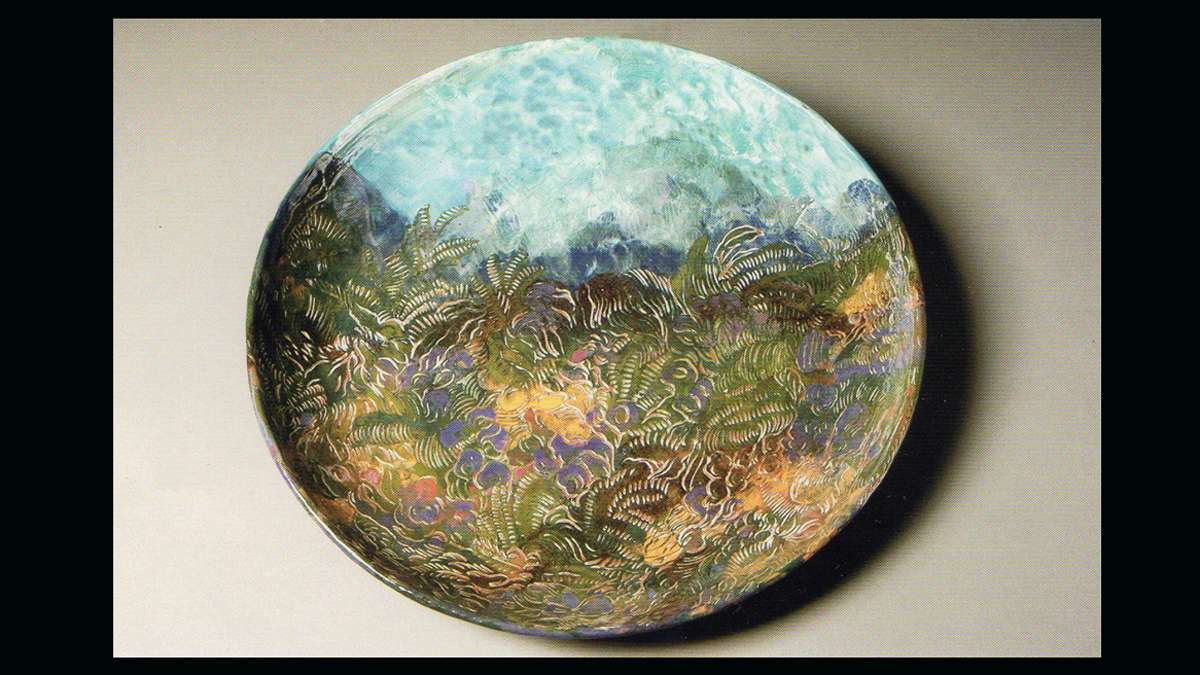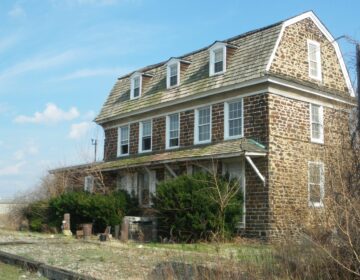Hopewell, N.J. artists Invite visitors Inside their studios Oct 5-6
It’s that time of year when fall foliage lures you down country roads. But you don’t have to drive all the way to Vermont — just pop open the sun roof and experience autumnal air in Hopewell, N.J., where rolling hills, Victorian architecture and a array of restaurants serving seasonal fare makes it feel like New England.
The oxen are continuing their colorful stampede, and the 7th annual Hopewell Tours Des Arts, Oct. 5, 10 a.m. to 5 p.m., and Oct. 6, 11 a.m. to 4 p.m., invites visitors inside artist studios.
You are what you eat, and the artwork produced here is very much reflective of the rural hamlet. Susan MacQueen has explored the image of sheep through sculpture, installation, monoprint and drawing. Fleece, rope, ribbon, string, lace, mop heads and gesso are among the materials used to make the coats of the quadruped ruminant.
MacQueen grew up on a farm and has always lived in rural areas. Working in collage, she used glassine, natural fibers and string. “So I have this debris, and it was sitting on the table for a while, and I gathered them up to play with them and realized the materials looked like sheep,” she said.
“Sheep appeal to me as a model of cooperation, though not a perfect model. But they do a pretty good job. They remain in my thoughts because of the time we live in, and the flock is a model of living together, being different and getting along.”
Most people see sheep as dots on a pastoral landscape, but MacQueen wanted to bring out their rugged individuality. Using everything from felt, fringe, old T-shirts, fabric, grass, flowers, lace, paper and chenille robes to the bathroom rug, she weaves these around a frame made from fencing and wooden legs. “It’s put together with human will and glue.”
These are not stuffed animals you’d tuck under the covers with a sleeping child. “Sheep aren’t really fluffy,” she said. “They lie in dirt and stuff gets caught in their coat as a kind of diary of their experiences.”
There’s a black sheep that, upon closer inspection, is a white sheep in a black coat. MacQueen says she wanted to return the favor to all the sheep that have given us garments, and to make a statement about the social concept of the black sheep that is ostracized, shunned, an outsider.
In addition to three-dimensional work, MacQueen loves to draw, and has made intricate drawings of bovids. On a table is a taped-together drawing that looks like it could be a preliminary sketch, but in fact the drawings often come after the sculptural pieces. There are notes describing the flock: “This one wears his/her experience in her fleece.” “This one has a medusa like quality around the face.” “This one heavily gessoed canvas wrapped like Lazarus or home from the war.” “A bit like a puff ball, heavily ruffled, wool strips dipped in tea.”
Nestled nearby in the Sourland Mountains, Janet Keller Laughlin finds the flora and fauna of the natural world to be the core of her inspiration. Her studio, built in the former garage of her house, is surrounded by gardens that stand out even on a fall day. In addition to producing fine art, decorative art, illustration and graphic design, she is a clinical aromatherapist, and plants herbal gardens for beauty, culinary, aromatic and therapeutic applications, as well as reference for botanical studies and landscape scenes.
Inside, her studio is filled with fine antiques, such as Federal-style fluted columns and a hand-carved cupboard. In fact, the space looks more like a gallery than a studio, although Laughlin really does work here, with art supplies organized on casters to be moved around.
An antique typesetter’s box has been filled with dried hickories, splitting open, still evolving. When a visitor expresses fascination, Laughlin brings out a jeweler’s box filled with “gems.” These jewels are made from plant material, such as the hickory nuts or osage orange — and painted to look like precious metals. They were created for the Philadelphia Flower Show, as well as a handbag made from a painted gourd and other plant material: mustard, dogwood, eucalyptus, corn, cover and coriander.
Hopewell is home to farmers and artists. Lucia Stout Huebner and her husband Charlie raise grass-fed beef and lamb on their 58 acre Beechtree Farm in Hopewell. As chair of the Hopewell Township Agricultural Advisory Committee, Huebner has been active in preserving farmland and is the off-site market manager for the Pennington Farmers Market. All this finds its way into her pastels and oils, exhibited at the Hopewell Train Station.
Also on the tour is the Morpeth Gallery, exhibiting Diana Gonzalez Gandolfi, who creates abstract grids, or maps, of the places she’s lived — Argentina, Colombia, Indonesia, New York, Boston, and New Jersey — weaving in memories that touch on political boundaries and personal stories.
The self-guided tour maps offer directions to studios. Maps are available at the Railroad Station, Railroad Place, and the Brother’s Moon, 7 W. Broad St., or at hopewellarts.com.
_______________________________________________
The Artful Blogger is written by Ilene Dube and offers a look inside the art world of the greater Princeton area. Ilene Dube is an award-winning arts writer and editor, as well as an artist, curator and activist for the arts.
WHYY is your source for fact-based, in-depth journalism and information. As a nonprofit organization, we rely on financial support from readers like you. Please give today.











